Caruthers Corners
Founding Fathers
“The things that we have and that we think are so solid – they’re like smoke and time is like the sky that the smoke disappears into, nothing is left but the sky, and the sky keeps on being just the same forever.”
- Booth Tarkington, Hoosier author and two-time Pulitzer
Prize-winner (The Magnificent Ambersons, Alice Adams)
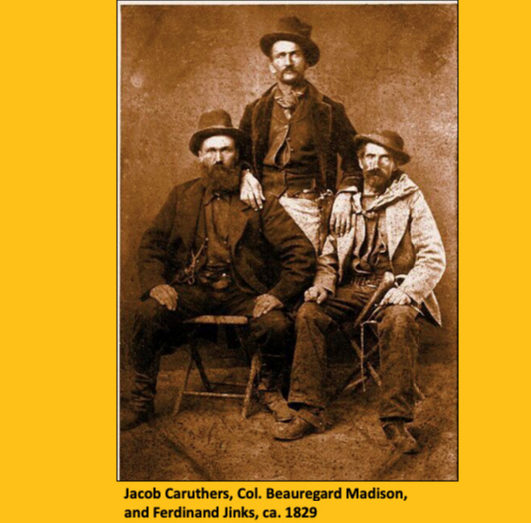
There’s no question that these three hardscrabble frontiersmen – Caruthers, Madison, and Jinks – led the wagon train that brought the original settlers to Caruthers Corners. However, there’s ample debate over the role each played. Jacob Caruthers somehow maneuvered the good citizens into naming the town after him. There have been hard feelings among the Madison and Jinks descendants ever since. The Jinks family is particularly bitter about being “all but written out of history.” Nonetheless, the three Town Founders continue to be revered like mythological gods in this part of Indiana.
• Jacob Abernathy Caruthers (1799-1864).
• Col. Beauregard Hollingsworth Madison (1801-1884).
• Ferdinand Aloysius Jinks (1802-1898).
Some Members of the 1829 Wagon Train
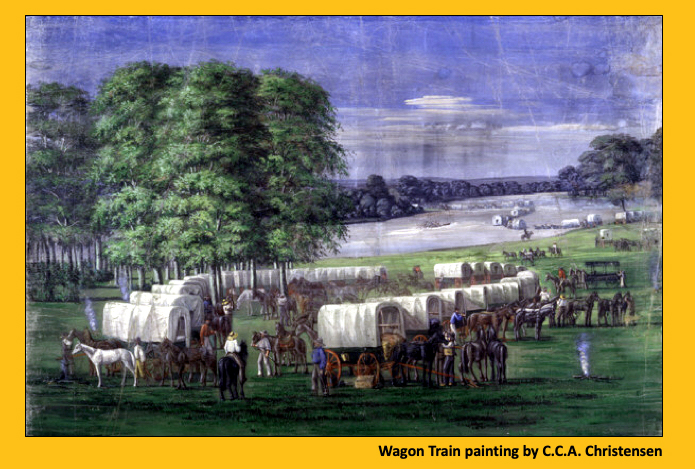
|
Early travel in the area was on foot or by horseback. Settlers occasionally moved their possessions by wagon, but the wagons often broke down or bogged down in the mud flats. In the summer, horseflies and mosquitoes were prevalent in these wilderness areas.
These wagon trains traveled an overland route called the Wilderness Road, a trace that crossed the mountains at Cumberland Gap in southeastern Kentucky, then turned north past Louisville and veered in the direction of Salt Landing on the Ohio River. Here, John Brinley (sometimes spelled Brindley) operated a ferry that crossed into Indiana. Corydon, the settlement that had served as Indiana Territory’s capital from 1813 to 1816, was located only 15 to 20 miles from the river.
However, seeking a shortcut to Fort Dearborn (Chicago) and the upper reaches of the Northwest Territory, Col. Madison led the wagon train across what is now Ohio, turning west toward Fort Wayne. That’s where it broke down near the Wabash.
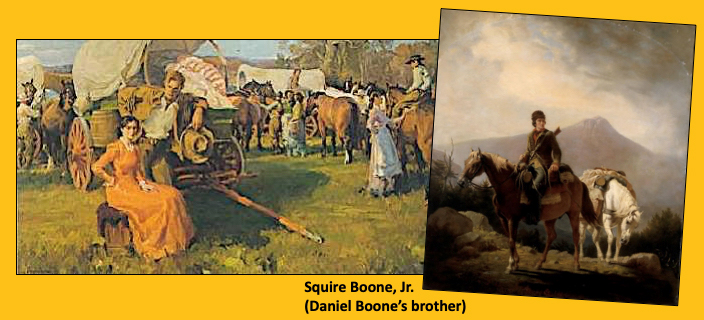
• Major Samuel Elmsford Beasley – Known as “Old Sam.” Leader of the Battle of Gruesome Gorge. A retired military man heading West with his family. His descendants credit him with a bigger role in the town’s founding than is acknowledged in the history books.
• Madelyn Taylor Beasley – Wife of Old Sam Beasley. Supposedly created the Beasley Heritage Quilt. Killed on the wagon train by an Indian attack.
• Rev. Thaddeus Barrington Taylor – Maddy’s “great-great grandfather.” A Bible-toting, two-gunned preacher.
• Millicent Taylor – Rev. Taylor’s wife. Maddy’s “great-great grandmother.” Also a quiltmaker.
• Sir Samuel Langston Buttersworth – Sam Butterworth’s great-grandfather. An Englishman with a royal lineage. Traveling with his family from Surrey, England, on their way to La Bey (Green Bay).
• Mordicai Bradshaw – Harley Bradshaw’s great-grandfather. Killed Sir Samuel Buttersworth in a pistol duel over a lame horse. A hat maker by trade, following the beaver market.
• Andrew Wayne – A cousin of Mad Anthony Wayne, and great-grandfather of Elmer Jackson Wayne. Claimed the land known as Injun Woods. He’d been on his way to Fort Wayne to meet his cousin Isaac.
• Sgt. Abraham Duncan – A retired military man. An expert horse wrangler. Said to have had metal teeth. Traveling with his wife and four children on their way to Fort Dearborn (Chicago) where he’d been promised a job as a stable manager.
• “Wild Man” John Randolph Longbottom – A ruffian who carried a 20-round double-barreled Lefaucheux revolver and a 14-inch facón, the fighting knife used by the gaúchos of south America. He claimed to have killed 34 men, “not counting Indians.” On way to Fort Wayne to seek a job with Alexander Ewing’s sons as a fur trader.
• Alice Ann Caruthers – Wife of Town Founder Jacob Caruthers. A bitter, unfriendly woman subject to severe migraines. ”The woman felt she was better than her traveling companions,” Ferdinand Jinks wrote in his journal. “She behaved as if her scat didn’t smell.” Insisted the town be named after her husband.
• Ursula Andrea Jinks – First wife of Town Founder Ferdinand Jinks. Supposedly created Quilt No. 17, a map quilt that served as a treasure map to the hidden Jinks gold. Said to have been scalped by Indians.
• Ferdinand Aloysius Jinks Jr. – Known as “Junior.” Oldest son of Ferdy and Ursula. Made the trip west with them as a two-year-old child. Was said to have ridden all the way from Boston in a wagon filled with gold bullion.
• Bonita Janine Carpenter Madison – Beauregard Madison’s 19-year-old wife. This trip was their honeymoon. She wrote in a letter to her sister: “The hardship of travel engulfs me … the Wild Red Men who inhabit this land frighten me … I wish I was home with you.”
According to historical records, it was a long train, close to 20 Conestoga
Wagons, each pulled by a team of eight horses. Needless to say, there were a number of pioneers on the train – too many to enumerate here.
Note: Some people have been known to claim ancestry with various members of the wagon train, despite historical records to the contrary. It’s a status thing in Caruthers Corners to have forefathers among the Town Founders.
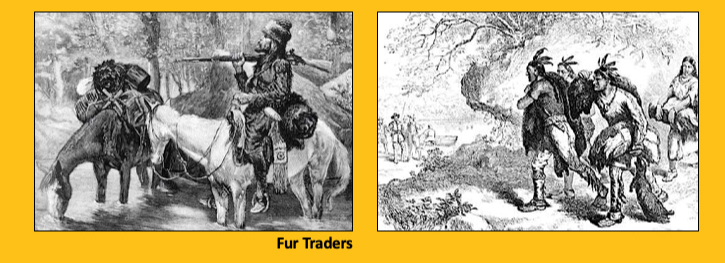
Other Early Pioneers
Among the tribes that lived in what is now Indiana were the early Mound Builders, followed by Delaware, Kickapoo, Miami, Piankashaw, Shawnee, Wea, and Potawatomi.
After 1794, treaties opened up large areas of land for settlement. When the settlers first arrived, the buffalo were still so plentiful that travelers often had to seek shelter to avoid being trampled by a moving herd.
• Jean Baptiste Bissot, Sieur de Vincennes – A Canadian fur trader whose father owned a tannery. After entering a seminary in Quebec, he left to join the French Army’s Troupe de marine. In 1696, he was appointed commander of the French outposts southeast of Lake Michigan (present-day northeastern Indiana). There, he became friends with the Miami Indians and established a trading post at Kekionga (Fort Wayne).
• Squire Boone, Jr. – Daniel Boone’s brother was chased into the Northwest Territory (Indiana) in 1792 by hostile Indians, where he was forced to hide in a cave near Bucks Creek. Squire Boone and his family later settled south of Corydon ca. 1804.
• John Harbison and William Pennington – Around 1800 their two families settled near a salt lick at present-day Lanesville, but Indians drove them away. A few years later they returned from Kentucky and settled here permanently.
• Michel Brouillet – A French fur trader, he established posts along the Wabash River and its estuaries, and led Vincennes in a revival of the fur trade. In the early 1800s he saw the population of Vincennes jump from 75 people to 621 in just over a year.
• Pierre La Plante – An early settler who traded with the “Pottawattamies” at Fort Harrison around 1820.
• John B. Duret – An agent of the American Fur Company, he bought pelts from the Indians at a spot on the southern bank of the Wabash.
• George Rapp – Leader of a group of 800 people who moved into the Indiana Territory in 1814, settling on the banks of the Wabash River where they started a utopian society called Harmonie. Within ten years they had built brick buildings, a church, a sawmill, and granary. In 1825 George Rapp sold the town to a Scottish factory owner named Robert Owen, and returned to Pennsylvania with his followers.
• “Bloody Bob” Cravett – A trapper and Indian fighter, he served under General John Tipton in relocating Potawatomi to Kansas in 1838. Lost a toe on the Trail of Death ride.
• Gen. John Tipton – A former US Senator who was appointed Indian Agent for the Potawatomi and Miami tribes in 1838. That same year he led the forced removal of Minominee’s Yellow River band of Potawatomi to Kansas on the Trail of Death. He died a year later of poor health in Logansport, Indiana, a town he helped found ca. 1826. Several other Indiana towns also are named after him. |
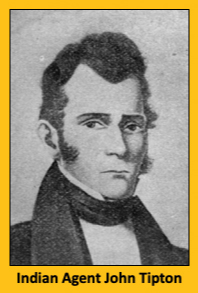 |
|
|






